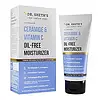What's inside
What's inside
 Key Ingredients
Key Ingredients

 Benefits
Benefits

 Concerns
Concerns

No concerns
 Ingredients Side-by-side
Ingredients Side-by-side

Water
Skin ConditioningCaprylic/Capric Triglyceride
MaskingGlycerin
HumectantSodium Acrylates Copolymer
Coconut Alkanes
EmollientDimethicone
EmollientAmber Extract
Skin ConditioningTocopheryl Acetate
AntioxidantTerminalia Ferdinandiana Fruit Extract
AntioxidantLaminaria Digitata Extract
Skin Protecting3-O-Ethyl Ascorbic Acid
Skin ConditioningPhenoxyethanol
PreservativeLecithin
EmollientCetyl-Pg Hydroxyethyl Palmitamide
Skin ConditioningCeramide EOP
Skin ConditioningCeramide Ns
Skin ConditioningCeramide NP
Skin ConditioningCeramide As
Skin ConditioningCeramide AP
Skin ConditioningWithania Somnifera Root Extract
Skin ConditioningDisodium EDTA
Ethylhexylglycerin
Skin ConditioningWater, Caprylic/Capric Triglyceride, Glycerin, Sodium Acrylates Copolymer, Coconut Alkanes, Dimethicone, Amber Extract, Tocopheryl Acetate, Terminalia Ferdinandiana Fruit Extract, Laminaria Digitata Extract, 3-O-Ethyl Ascorbic Acid, Phenoxyethanol, Lecithin, Cetyl-Pg Hydroxyethyl Palmitamide, Ceramide EOP, Ceramide Ns, Ceramide NP, Ceramide As, Ceramide AP, Withania Somnifera Root Extract, Disodium EDTA, Ethylhexylglycerin
Cocamidopropyl Pg-Dimonium Chloride Phosphate
Trilaurin
Skin ConditioningWater
Skin ConditioningPolyglyceryl-3 Methylglucose Distearate
EmulsifyingBisabolol
MaskingCetearyl Ethylhexanoate
EmollientCetyl Ricinoleate
EmollientTriheptanoin
Skin ConditioningNeopentyl Glycol Diheptanoate
EmollientGlycerin
HumectantSilica
AbrasiveStearyl Alcohol
EmollientPentaerythrityl Distearate
EmulsifyingBetaine
HumectantPhenoxyethanol
PreservativeAmmonium Polyacryloyldimethyl Taurate
Emulsion StabilisingEthylhexylglycerin
Skin ConditioningXanthan Gum
EmulsifyingDisodium EDTA
Cocamidopropyl Pg-Dimonium Chloride Phosphate, Trilaurin, Water, Polyglyceryl-3 Methylglucose Distearate, Bisabolol, Cetearyl Ethylhexanoate, Cetyl Ricinoleate, Triheptanoin, Neopentyl Glycol Diheptanoate, Glycerin, Silica, Stearyl Alcohol, Pentaerythrityl Distearate, Betaine, Phenoxyethanol, Ammonium Polyacryloyldimethyl Taurate, Ethylhexylglycerin, Xanthan Gum, Disodium EDTA
 Reviews
Reviews

Ingredients Explained
These ingredients are found in both products.
Ingredients higher up in an ingredient list are typically present in a larger amount.
Disodium EDTA plays a role in making products more stable by aiding other preservatives.
It is a chelating agent, meaning it neutralizes metal ions that may be found in a product.
Disodium EDTA is a salt of edetic acid and is found to be safe in cosmetic ingredients.
Learn more about Disodium EDTAEthylhexylglycerin (we can't pronounce this either) is commonly used as a preservative and skin softener. It is derived from glyceryl.
You might see Ethylhexylglycerin often paired with other preservatives such as phenoxyethanol. Ethylhexylglycerin has been found to increase the effectiveness of these other preservatives.
Glycerin is already naturally found in your skin. It helps moisturize and protect your skin.
A study from 2016 found glycerin to be more effective as a humectant than AHAs and hyaluronic acid.
As a humectant, it helps the skin stay hydrated by pulling moisture to your skin. The low molecular weight of glycerin allows it to pull moisture into the deeper layers of your skin.
Hydrated skin improves your skin barrier; Your skin barrier helps protect against irritants and bacteria.
Glycerin has also been found to have antimicrobial and antiviral properties. Due to these properties, glycerin is often used in wound and burn treatments.
In cosmetics, glycerin is usually derived from plants such as soybean or palm. However, it can also be sourced from animals, such as tallow or animal fat.
This ingredient is organic, colorless, odorless, and non-toxic.
Glycerin is the name for this ingredient in American English. British English uses Glycerol/Glycerine.
Learn more about GlycerinPhenoxyethanol is a preservative that has germicide, antimicrobial, and aromatic properties. Studies show that phenoxyethanol can prevent microbial growth. By itself, it has a scent that is similar to that of a rose.
It's often used in formulations along with Caprylyl Glycol to preserve the shelf life of products.
Water. It's the most common cosmetic ingredient of all. You'll usually see it at the top of ingredient lists, meaning that it makes up the largest part of the product.
So why is it so popular? Water most often acts as a solvent - this means that it helps dissolve other ingredients into the formulation.
You'll also recognize water as that liquid we all need to stay alive. If you see this, drink a glass of water. Stay hydrated!
Learn more about Water